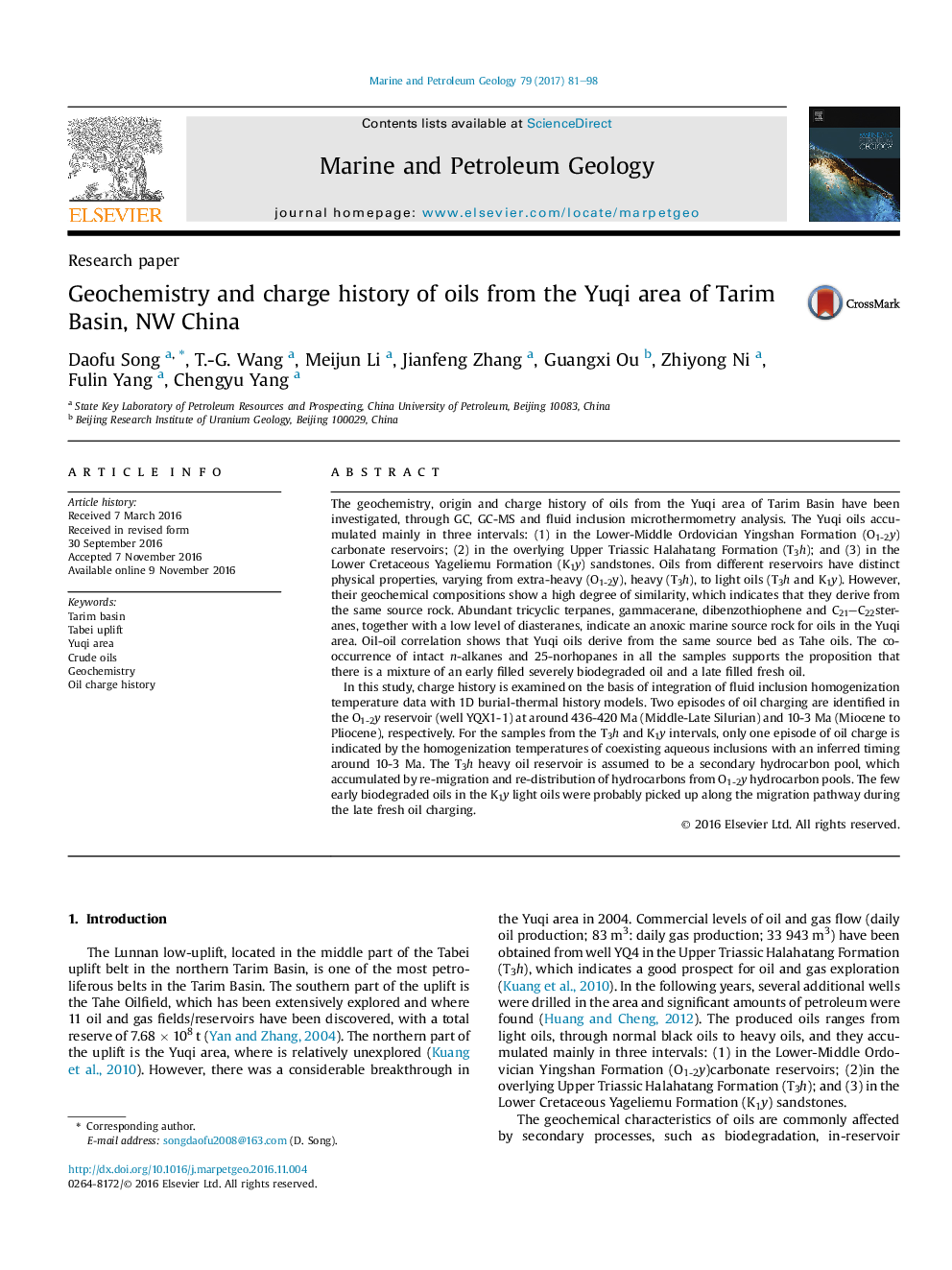| کد مقاله | کد نشریه | سال انتشار | مقاله انگلیسی | نسخه تمام متن |
|---|---|---|---|---|
| 6434301 | 1637148 | 2017 | 18 صفحه PDF | دانلود رایگان |
- Yuqi oils derive from the same source bed as Tahe oils.
- Geochemical compositions indicate an anoxic marine source rock.
- Yuqi oils are a mixture of early filled biodegraded oil and late filled fresh oil.
- Different oil accumulation processes resulted in the different physical properties.
The geochemistry, origin and charge history of oils from the Yuqi area of Tarim Basin have been investigated, through GC, GC-MS and fluid inclusion microthermometry analysis. The Yuqi oils accumulated mainly in three intervals: (1) in the Lower-Middle Ordovician Yingshan Formation (O1-2y) carbonate reservoirs; (2) in the overlying Upper Triassic Halahatang Formation (T3h); and (3) in the Lower Cretaceous Yageliemu Formation (K1y) sandstones. Oils from different reservoirs have distinct physical properties, varying from extra-heavy (O1-2y), heavy (T3h), to light oils (T3h and K1y). However, their geochemical compositions show a high degree of similarity, which indicates that they derive from the same source rock. Abundant tricyclic terpanes, gammacerane, dibenzothiophene and C21C22steranes, together with a low level of diasteranes, indicate an anoxic marine source rock for oils in the Yuqi area. Oil-oil correlation shows that Yuqi oils derive from the same source bed as Tahe oils. The co-occurrence of intact n-alkanes and 25-norhopanes in all the samples supports the proposition that there is a mixture of an early filled severely biodegraded oil and a late filled fresh oil.In this study, charge history is examined on the basis of integration of fluid inclusion homogenization temperature data with 1D burial-thermal history models. Two episodes of oil charging are identified in the O1-2y reservoir (well YQX1-1) at around 436-420 Ma (Middle-Late Silurian) and 10-3 Ma (Miocene to Pliocene), respectively. For the samples from the T3h and K1y intervals, only one episode of oil charge is indicated by the homogenization temperatures of coexisting aqueous inclusions with an inferred timing around 10-3 Ma. The T3h heavy oil reservoir is assumed to be a secondary hydrocarbon pool, which accumulated by re-migration and re-distribution of hydrocarbons from O1-2y hydrocarbon pools. The few early biodegraded oils in the K1y light oils were probably picked up along the migration pathway during the late fresh oil charging.
Journal: Marine and Petroleum Geology - Volume 79, January 2017, Pages 81-98
